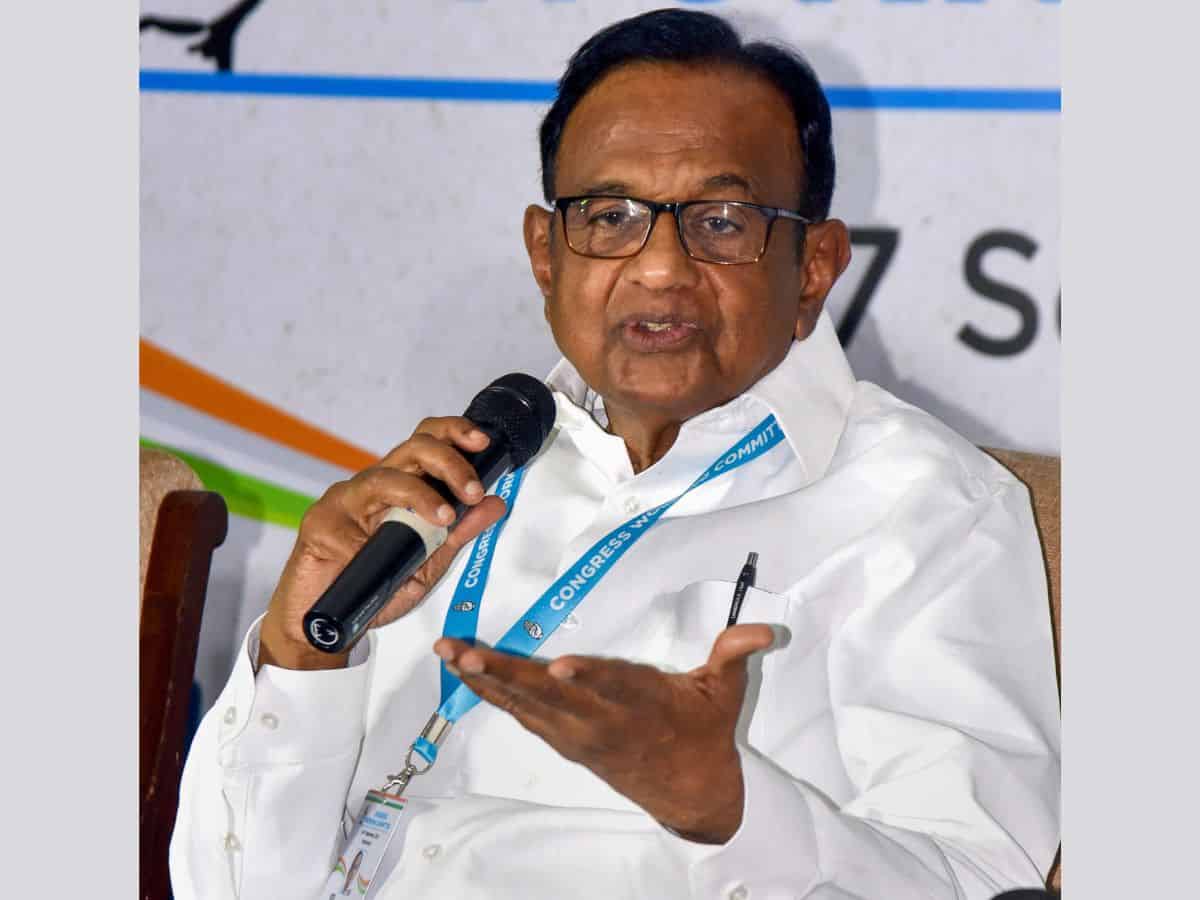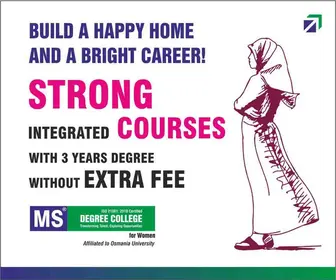
New Delhi: Opposition parties led by the Congress on Tuesday drilled holes into India’s ‘steller’ GDP growth story, saying it is it was a job-less growth, a charge the ruling BJP countered by citing shred stewardship given how major economies around the globe were faltering.
While the opposition parties talked about the inequitable growth where the rich have become richer and the poor poorer, BJP leaders referred to India’s rise as a destination for foreign investment and its accent as the top manufacturer of automobiles to mobile phones.
Former finance minister P Chidambaram led the opposition charge saying the ‘steller’ fastest growing major economy was not reflecting on the ground as there continues to be high unemployment.
“Of the worker population, that is 46 percent of the total population, male workers are 69 percent but female is only 22 percent. Of the worker population, less than 50 percent actually work,” he said.
Effectively, he said, “It means that only 23 percent of the people work. This is more or less constant in the last nine and half years of the BJP government. Why, I ask, if we have such scintillating growth, why is this number not improving?
Citing official periodic survey data, he said the unemployment rate in the age group 15-24 is 23.22 per cent; 42 per cent among graduates under the age of 25; 23 per cent among graduates between the age of 25-29 and nearly 10 per cent in graduates between the age of 30-34.
Stating that one out of four graduates will be unemployed and even until the age of 35 one out of ten will be unemployed, Chidambaram asked, “Why is this spirited growth, scintillating growth not turning into jobs?.
Keeping in mind most employment in this country is self-employment 57 per cent, he said even regular-wage employees have declined from 24 per cent to 21 per cent.
“Apart from the quantity, the quality of employment is also poor,” he added.
On price rise, he said even today the CPI inflation is above the tolerance limit of 4-6 per cent of the RBI and food inflation is 9.2 percent.
“What does the combination of high unemployment and high prices mean? It means that the impact will be felt in cut in domestic consumption, cut in household consumption,” Chidambaram asserted.
Stating that the net financial assets of households have plummeted to the lowest level of 5.1 per cent, he said, “It means that people are consuming less, people are borrowing more, they are liquidating their household assets and savings and their net financial savings has come down to a historical low, 50-year low of 5.1 per cent.
The consequences of such developments are felt in child malnutrition and their education and mental ability, he said.
“Ultimately, the question is who is this government for? Is it for the poor, or is its policy so skewed that it is in favour of the rich?” the former finance minister asked.
He said 23 crore people of India are poor despite the poverty bar being very low at Rs 1,286 per month per person in urban areas and Rs 1,089 per month per person in rural areas.
“It shows up in inequality. The bottom 50 per cent (of the population) own 3 per cent of national wealth and gets 13 per cent of the national income. And the top 5 per cent owns 60 per cent of the national wealth and the top 1 per cent holds 22 per cent of the national income,” he said.
This kind of growth is unacceptable, he said, adding, “We need more balanced growth”.
Citing IMF data, Sudhanshu Trivedi of BJP said the growth rate of leading economies as the US is 1.5 per cent, the EU is 1.2 per cent, Germany at 0.9 per cent and France at 1.2 per cent, Japan at 1 per cent and the UK at 0.6 per cent and India is having a growth rate of 6.3 per cent.
India is now emerging as a global economic powerhouse, led by the constructive policies of the Modi government. The country is having a record number of automotive sales, and has become the third leading manufacturer globally. Now 7.7 crore families own an automobile.
“We are now fifth largest economy, fourth largest stock exchange, third largest automobile manufacturer and second-largest mobile phone manufacturer and leading country to invest into infrastructure and has also touched moon,” he said.
He also said there are reports suggesting India would emerge as the economic engine of Asia replacing China. Even during the festive season this year, Indians have spent Rs 4 lakh crore. The digital transformation under the leadership of Modi has led India into a new form.
“Once people mocked the Indian economy saying that it would never grow more than 2 per cent. They had termed it as Hindu rate of growth,” he said adding now this 7.8 per cent growth rate since BJP has come into power.
BJP MP GVL Narasimha Rao and Independent member Kartikeya Sharma said the GDP of the country has grown to USD 3.5 trillion because of economic initiatives taken by the government.
The average inflation rate is 4.4 per cent, which in the UPA period was almost in double digits. Even the RBI had forecasted 5.4 per cent, Rao said.
“When the world is witnessing its highest inflation, India’s inflation number is even below the RBI level,” he said.
There is a turnaround in the economy, a transformation in the system and now money reaching needy people, Rao said ..
Initiating the discussion, Derek O’Brien (TMC) said how India’s economy is looking like depends on “through whose eyes you are looking through” and will be good if it is seen from the perspective of stock market growth, the rich and billionaires and also from a GDP growth point of view.
“But if you look at the economy through the eyes of any family anywhere in the country, what will those eyes looking at the economy tell you? Those eyes will tell you that from 2014 to 2023, the price of rice has gone up by 56 per cent, the price of wheat by 59 per cent, milk by 61 per cent, tomatoes by 115 per cent and tur dal by 120 per cent,” he said.
O’Brien also asked if the wealth that has been created is passed on equitably to the citizens while highlighting that rural inflation has turned higher than urban inflation for the first time in six years.
“Yes, let the stock market go up, let the billionaires go up but spare a thought, more than a thought, for the marginalised and for the vulnerable,” he added.
Aam Aadmi Party member Ashok Kumar Mittal said that we should not only see (GDP) figures but we have to see facts also.
RJD member Manoj Jha stated that all taxation and other numbers do not reflect the true picture if the poor’s food plate does not have anything.
CPI (M) member Elamaram Kareem said tax concessions and incentives given to rich corporates are widening the gap between two Indias, the rich and the poor.
JDU member Aneel Prasad Hegde called for a permanent solution to the issues related to the economy in the country.
IUML member Abdul Wahab said that the government needs to see the real problem.
BJP member Sushil Kumar Modi said that if he (Chidambaram) will see with the glasses of his party (Congress) then he will not see the ground (reality).
Congress member Rajeev Shukla also raised concerns over “growing” trade deficit and said inflation needs to be checked as people are facing difficulties.
On economic reforms, he said this should be continued by any government, but some experiments have been done in the last 10 years by undoing some of the decisions of the previous (UPA) government.
He also mentioned some promises made by the (BJP-led) NDA such as bringing back black-money, selling petrol and diesel at cheaper rates and providing housing.
The Congress leader also claimed that a growing number of entrepreneurs are leaving the country and settling aboard. “This is a concern. They going due to excessive regulatory pressure or some any other reason. The government should inquire,” he said.
Kerala Congress (M) member Jose K Mani said the economic wellbeing of citizens transcends political affiliation.

